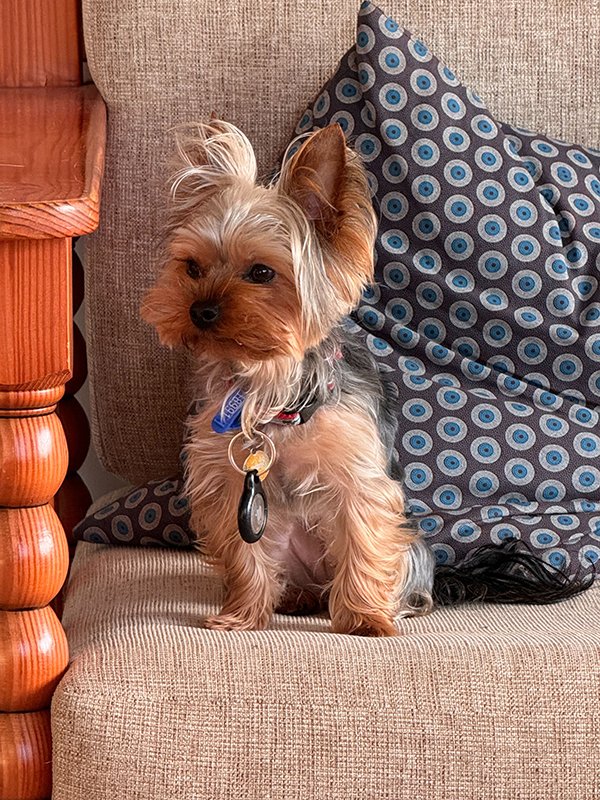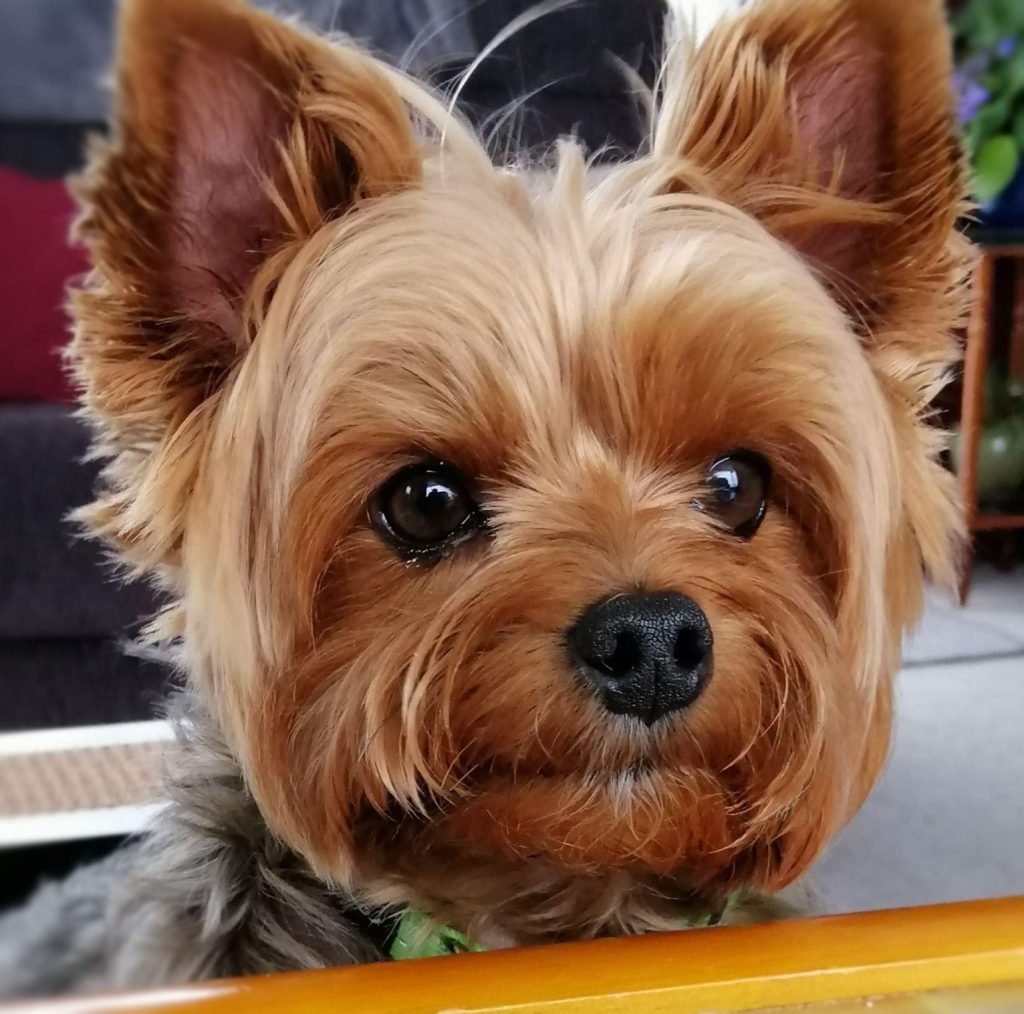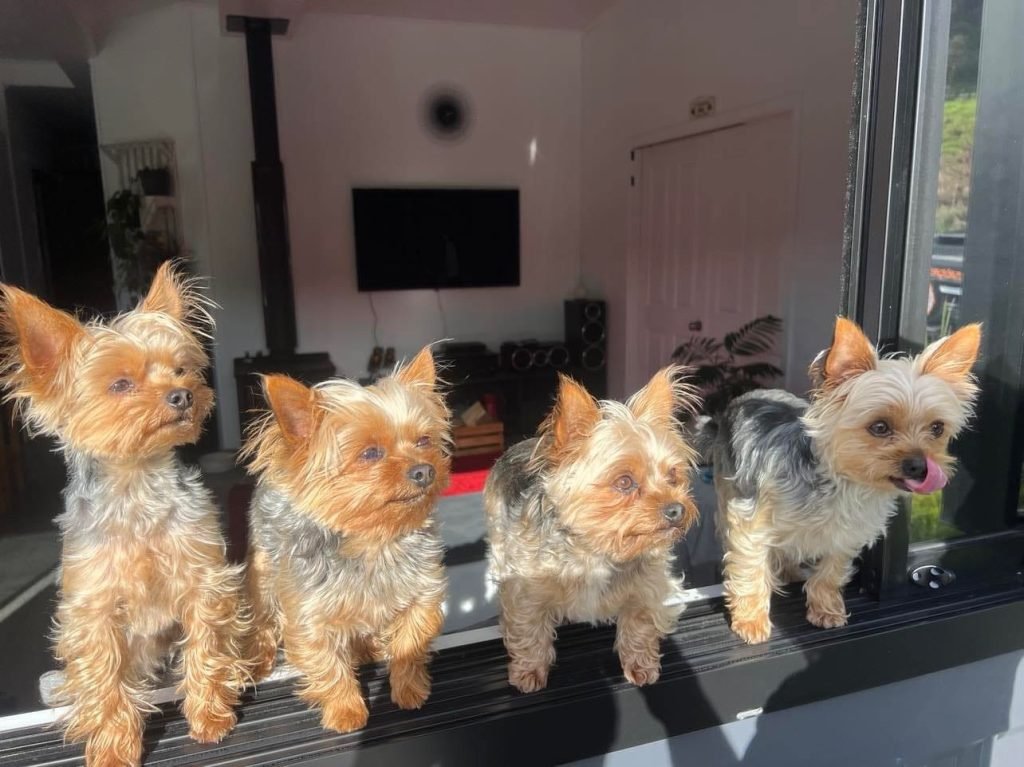Grooming Tips for Yorkies, Silkies, Schnauzers and Westies
This is to address the issue of erect or floppy ears on Yorkies, Silkies,Schnauzers, Westies etc. and in fact most of the terrier breeds. There is no definitive way to assess whether a puppy is likely to have erect ears and in fact it can be several months before this manifests itself in some cases. It can be hereditary, when in some cases even just one ear will be erect and the other floppy! At around 6 to 8 months though the musculature is usually sufficiently strong to support the ears.
This also depends on the weight of the hair – obviously if the ears are tipped at the point and shaved inside, trimmed close on the outer edges and feathered on the inside edge as the breed standard requires, the weight of the hair will then assist an a erect ear. It is also possible to shave the complete ear and tape the ears into position but most pet owners do not use this method as they will not be showing their dogs in the ring. If the hair is allowed to grow long it will inevitably weigh the ears down as they are in most cases fairly light and delicate. Hopefully most pet owners will see the beauty in the dear wee faces of their chosen pet and accept the final result!
Grooming Requirements for Dogs – All breeds.
Grooming requirements are so important on all breeds, even short haired dogs who still need brushing, bathing, nails trimmed and ear and faces cleaned. At four months when the final veterinary shots are complete, this offers a perfect opportunity to start grooming. If the first groom is left too much later, it can cause stress and major prepping if the coat is matted, nails are too long etc. Your chosen groomer can advise you on the correct brush and comb technique to do at home between grooming.

Grooming your Puppy
Most groomers offer a puppy price to a certain age, and suggest a bath and brush which includes ear cleaning, sanitary trim around the penis or vulva, a small rectal trim (ask for this as a large swathe of shaved hair in that region not only looks unattractive, but it is also unnecessary), pads of the feet trim and nail clipping. It can also include a trim around the face and eyes if the puppy is compliant just to get them used to the process. When the next groom is done, clippers can be introduced with them being held against the body to enable the puppy to accept the vibration and noise. Nails should be clipped until they grow stronger, then if possible a nail grinder can be introduced to round off the edges as starting this process too soon could damage the delicate nails. Some dogs who hate the pressure of the nail clippers will gladly allow their nails to be ground only.
Tips for new puppy owners: Several things can be started with a new puppy to make your life easier and to gently introduce your pet to a life of having their whole body handled by the groomer. For example, playing with the puppy’s ears, by gently inserting your finger inside and fondling them (try this at night when they are tired and relaxed and hopefully on your lap!); stroking their chin, face and nose, which will make them less stressed when the groomer needs to hold their chin hair for safety when trimming around their eyes and mouth and for you when you use a soft makeup pad soaked in warm water under their eyes to remove the debris; holding their paws and stroking their feet and pads; playing with their tails and rubbing tummies which most dogs love. All of this greatly assists your pet when the groomer touches and grooms these areas of the body. Pads of the feet are shaved to not only remove any debris such as “biddy bids” from between the pads but also to stop the dog from slipping on smooth surfaces.
The penis/vulva areas are gently shaved to remove the hair which in male dogs in particular can form a “spout” on the end which means all the urine ends up on their tummy hair, creating an odour and possible bacteria. Ears are gently cleaned with a special ear cleaner just in the outer folds – dogs ear canal has a bend in it and any Q-tips etc can be invasive. If the ears smell “yeasty” and have a dark brown exudate, they usually have an infection which not only can be hard to treat but also be chronic. It is most important to let a vet look in the ear with an otoscope to determine the cause of the infection.
Fortunately if your pet’s ears are erect they have a better chance of healthy ears throughout their lifetimes as opposed to say a cocker spaniel who only has air in the ear canal while running because of the weight. When your puppy poops, check that there is no fecal matter on the underside of their tail or in the hair surrounding the anus as this can become matted and the dog will eventually be unable to clean themselves properly.
The more you can do as a puppy means that you will have a compliant healthy pet as they grow. Anal glands are a source of worry in small breeds and if you see your dog scooting on the floor or becoming distressed when trying to clean themselves, go immediately to the vet to have them expressed. Vets do this internally, groomers do them externally if they have been trained correctly though not all choose to do this. The odour is foul as they are scent glands and anal liquid is dark brown. If left too long it is possible to have an anal gland “explode” through the skin, requiring cleansing and stitching of the wound. Some dogs never have a problem throughout their lives.
Choose your groomer carefully. As a long time groomer myself who is still trying to completely retire at 81 years (!) when recommending a groomer I first look at their temperament and you will want to know your pet is gently and ethically groomed. Secondly, is their salon safe and clean – quite apart from the inevitable hair on the floor and their grooming tables? When you are out with your pet and see a well groomed dog, ask about the groomer they go to and inevitably one or two groomers names will be repeated. Visit the groomer and ask about services and whether they can do the “breed standard” on your pet. (Not all groomers are sufficiently experienced to do that).
Good luck and enjoy your beautiful fur babies! Written by – Shirley McEwan (An experienced Dog Groomer with a phenomenal amount of Grooming and Dog Showing experience).



